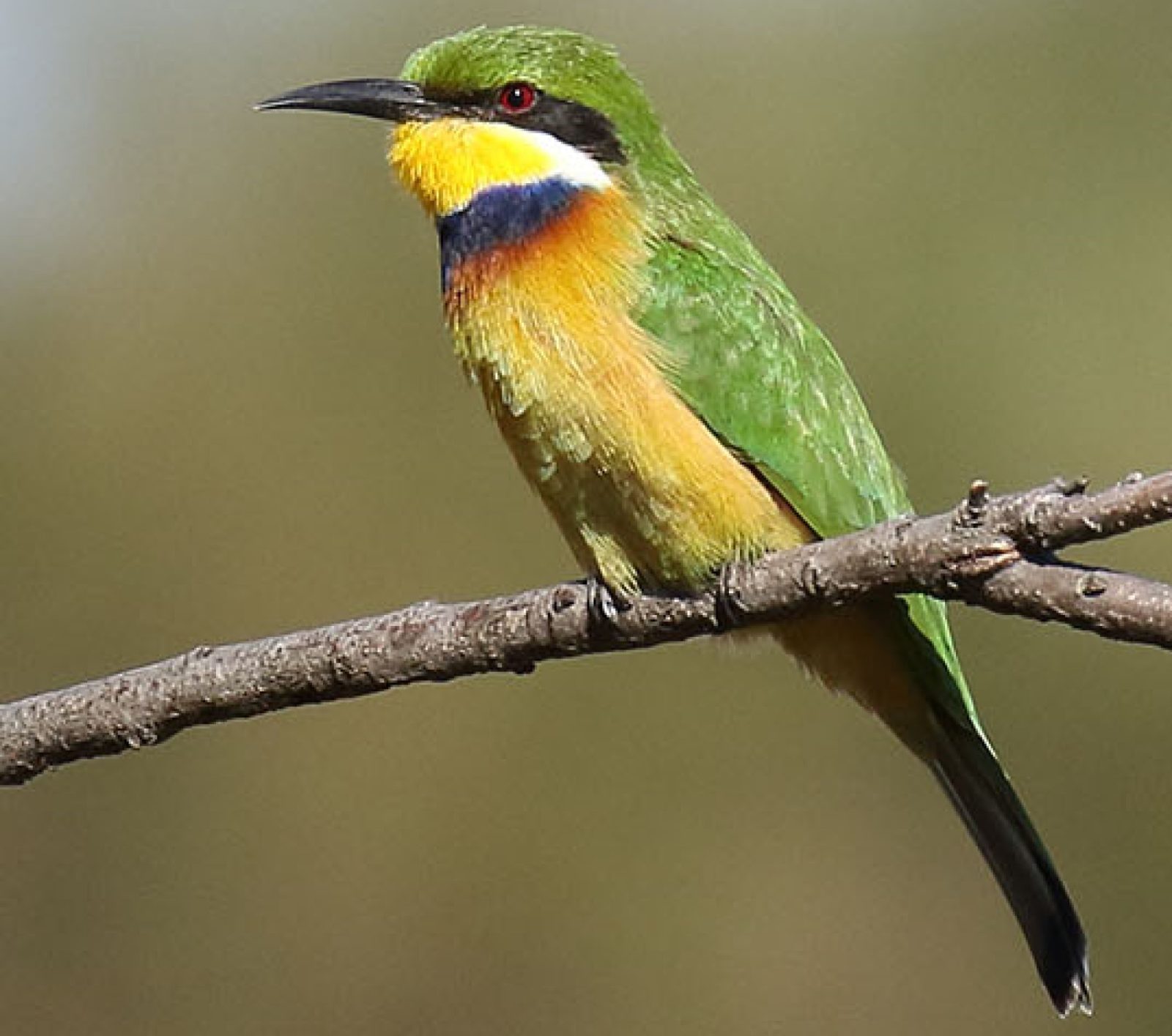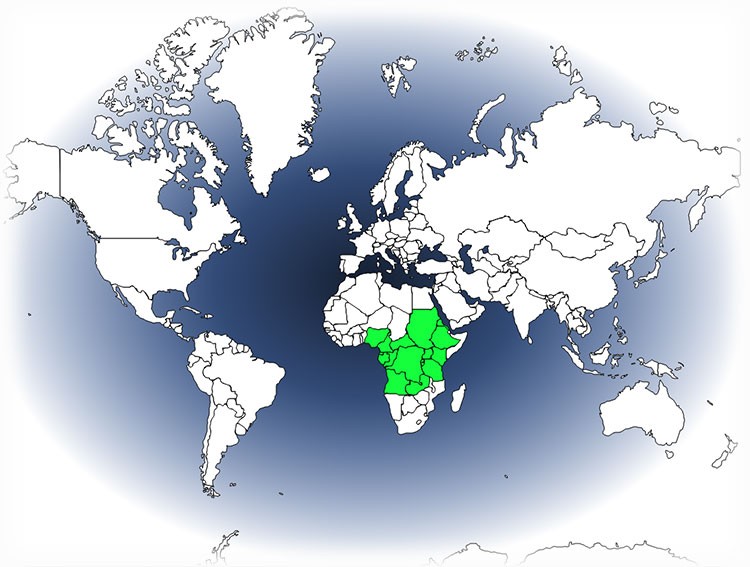
Blue-breasted bee-eater
The blue-breasted bee-eater is a species which is found (as the map shows) in central Africa from coast to coast. Within these countries the blue-breasted bee-eaters are found in a variety of habitats, ranging from reedy lake shores to the savanna grass lands along the edge of the Congo basin. They have also been recorded in marshes, grassy hillsides and papyrus beds. However, this species is usually associated with open wet habitats.
Their regular call is a series of trills, while the mating call goes on for a bit longer.
Their breeding period varies from place to place. In the Northern reaches of their range breeding occurs from February to March, in the East from October to December, in the South September to October and in the West August to September. Nests are dug into grassy hillsides or in eroded lakeshores. The nest consists of a tunnel, 45 to 75 cm long, at the end it opens to an egg chamber, measuring 17-70 x 18–22 cm. The eggs are kept in the unlined egg chamber during incubation.
They remain social with their offspring for longer than average, with the young staying around into the beginning of the next year.
